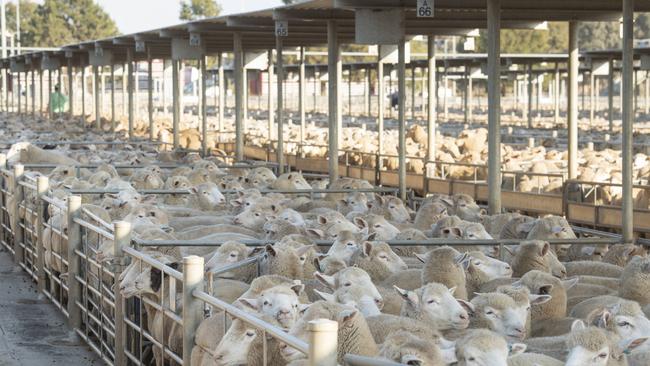Kelly Country: Overseas conflict takes a toll on Australian lamb
Values paid for light lambs in Victoria this week have been directly affected by overseas conflict. See the impact on livestock prices.
The price fate of light lambs in coming weeks is now closely linked to politics in the Middle East and if conflict between Iran and Israel escalates or tensions ease enough to allow commercial flights back-in.
Price falls of $15 to $40 were recorded for light lambs at multiple saleyards on Monday as processing demand for MK or ‘’bag lambs’’ which are air freighted in carcass form to the Middle East were disrupted.
Iran has been the centrepiece of the rejuvenated bag lamb trade, which has helped support the lamb market this season by absorbing a lot of light stock weighing less than 20kg cwt.
In recent months, export lamb shipments to Iran have ballooned to become the volume destination for airfreighted “bag lambs” (so-called because the lamb is sent in carcass form, essentially packaged in a bag).
The increased sales were linked to the lower price point of Australian lamb as it came off high prices from the flock rebuild after the drought. There was also the theory that Iran was stockpiling meat protein ahead of likely conflict in the region after the Hamas attack in early October that prompted Israel retaliate and start fighting in the Gaza Strip.
Middle Eastern politics are complicated and volatile, and there is a direct link from what happened in Australian saleyards on Monday back to the drone attack Iran launched on Israel over the weekend.
This prompted major commercial airlines, including Qantas in Australia, to either cancel or re-route flights to avoid the area. Destinations reportedly affected include flights to Iran, Israel, Lebanon, Syria and Jordan.
It was a snap decision that has left processors stranded to the point big players in the “bag lamb” game – such as Midfield Meat at Warrnambool – confirmed this week they had chilled lamb carcasses that were on the way to the Middle East being flown back to them.
Victoria is the major exporting state for chilled lamb carcasses to the Middle East. To go deeper into the export figures behind the trade.

According to the DAFF:
Victorian processors have air freighted 10,135 tonnes of lamb to the Middle East this year (January to March figures); compared 2223 tonnes out of NSW;
And of the total sales of chilled lamb carcasses sent to the Middle East this calendar year, Iran has been the volume buyer at more than 6000 tonnes.
A quick end to the posturing and war sentiment between Iran and Israel would be the best outcome for Australian producers, as taking competitiveness and price out of the light lambs does filter up the chain and take buying pressure off the other grades.
And the longer it goes on, the bigger the fallout amid reports processors will now bone out some of these light ‘’bag lambs’ to sell the meat as cuts into lower-tier export markets. This then affects demand and price for plainer lambs in the 20-24kg range that would usually have gone into these export slots.
This was evident at Bendigo on Monday, where plain lambs weighing less than 24kg were caught up in the much cheaper price trends. Heavier lambs have faired better, easing $5 to $10 at most early sales this week.
The industry now has average price points of around 650c/kg cwt for heavy lambs, against 550c for light lambs (and often a lot less at sales like Bendigo on Monday), which means there is plenty of trading opportunity.
Bendigo agent Alex Collins, McKean McGregor, was a volume buyer of trade and light lambs to feed on from Bendigo this week and said they still read the market as having good price upside for well finished heavy lambs in the winter.
“Regarding the number of light lambs that have gone out of the system this season, we still believe there will be supply gaps of good heavy lambs going forward,” he said.
The Middle East problem has overshadowed another issue for lamb this past week, and that has been an influx of numbers that has fed into prices drifting lower, particularly for export grades.
After the market showed some momentum and got close to 700c/kg in places around Easter, there was another wave of numbers, including 45,000 at Wagga Wagga on Thursday and around 25,000 head at Ouyen and Swan Hill.
These Thursday markets have been disrupted by Easter and will then run into the Anzac Day public holiday next week.
The promise of an upside for lamb prices is still being heartily talked about, but it has been slow in coming. This Middle East saga is something left of field the industry didn’t need.




